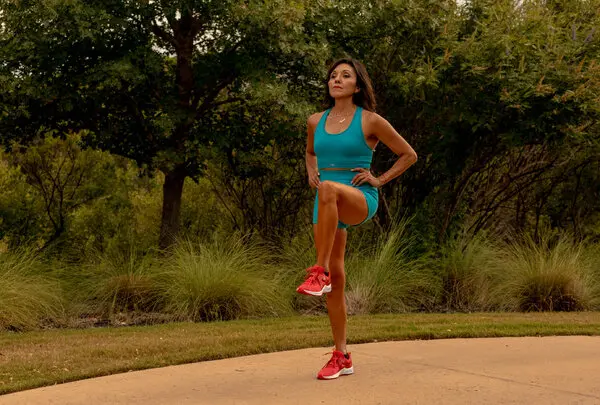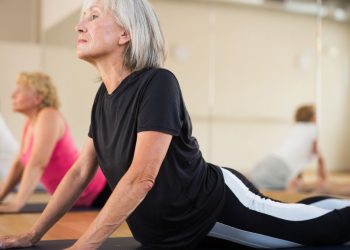Balance is a fundamental component of physical health that many of us take for granted—until we start to lose it. Whether you’re recovering from an injury, aging gracefully, or simply looking to enhance your athletic performance, walking balance exercises offer an accessible and effective way to improve stability, coordination, and confidence in your movements.
Why Balance Matters
Good balance is essential for virtually every activity in daily life, from climbing stairs to reaching for items on high shelves. As we age, balance naturally declines due to changes in muscle strength, joint flexibility, vision, and inner ear function. This decline increases the risk of falls, which are a leading cause of injury among older adults. However, balance isn’t just a concern for seniors athletes, fitness enthusiasts, and people of all ages can benefit from improved stability.
The beauty of walking balance exercises is that they combine functional movement with balance training. Unlike standing still on one leg, walking exercises teach your body to maintain equilibrium while in motion, which more closely mimics real-world scenarios. This makes them incredibly practical for everyday life.
Before You Begin: Safety First
Before diving into specific exercises, it’s crucial to establish safety protocols:
Create a Safe Environment: Practice in an open area free of obstacles, loose rugs, or slippery surfaces. Initially, work near a wall, sturdy counter, or railing that you can use for support if needed.
Wear Appropriate Footwear: Choose well-fitting shoes with non-slip soles that provide good support. Avoid socks alone, high heels, or loose slippers.
Start Slowly: Begin with easier variations and progress gradually. There’s no rush—building balance takes time and consistency.
Know Your Limits: If you have a history of falls, severe balance problems, or certain medical conditions, consult with a healthcare provider or physical therapist before starting a balance exercise program.
Use Support When Needed: There’s no shame in using a wall, chair, or walking stick for support, especially when starting out. Safety always comes first.
Essential Walking Balance Exercises
1. Heel-to-Toe Walking (Tandem Walking)
This classic balance exercise significantly reduces your base of support, challenging your stability.
How to perform: Walk in a straight line, placing the heel of one foot directly in front of the toes of your other foot with each step. Your feet should form a straight line, as if you’re walking on a tightrope. Hold your arms out to the sides for balance if needed.
Starting point: Begin with 10-15 steps, practicing near a wall for security.
Progression: As you improve, try this with your arms crossed over your chest, or practice with your eyes closed for an advanced challenge (only when confident and with proper support nearby).
2. High-Step Walking
This exercise improves hip flexibility, leg strength, and dynamic balance.
How to perform: Walk forward while lifting each knee as high as comfortable with each step, aiming to bring your thigh parallel to the ground. Pause briefly at the top of each lift before stepping down.
Starting point: Perform 10 high steps, holding onto a wall or counter if necessary.
Progression: Increase the hold time at the top of each lift, walk faster, or eliminate hand support.
3. Backward Walking
Walking backward challenges your balance system in new ways and improves spatial awareness.
How to perform: Stand with plenty of clear space behind you (check first!). Slowly step backward, placing your toes down first, then your heel. Take small, controlled steps and glance behind periodically to ensure the path is clear.
Starting point: Begin with 10-15 backward steps in a hallway with walls on either side.
Progression: Increase distance, vary your speed slightly, or try heel-to-toe backward walking.
4. Sideways Walking (Lateral Walking)
This exercise strengthens the muscles that stabilize your hips and improves lateral balance.
How to perform: Stand with feet together. Step to the side with your right foot, then bring your left foot to meet it. Continue stepping sideways for the desired distance, then repeat in the opposite direction.
Starting point: Walk 10 steps to the right, then 10 steps to the left.
Progression: Cross one foot over the other when stepping sideways (grapevine walk), or increase speed while maintaining control.
5. Figure-8 Walking
Walking in curves and circles challenges your balance more than straight-line walking.
How to perform: Set up two markers (cones, water bottles, or chairs) about 5-10 feet apart. Walk in a figure-8 pattern around them, making smooth curved paths rather than sharp turns.
Starting point: Complete 3-5 figure-8s at a comfortable pace.
Progression: Make smaller, tighter circles, increase speed, or try walking the pattern backward.
6. Walking with Head Turns
This exercise challenges your vestibular system (inner ear balance mechanism) while moving.
How to perform: Walk forward at a normal pace while turning your head slowly from side to side, as if you’re scanning your environment. Keep your body moving straight forward even as your head turns.
Starting point: Walk 20 steps with head turns, keeping the movement slow and controlled.
Progression: Add up-and-down head movements, or combine with heel-to-toe walking.
7. Walking While Carrying Objects
This functional exercise simulates real-life scenarios like carrying groceries.
How to perform: Walk while holding a light object in one hand, then both hands, then overhead. Try carrying a tray with an object on it (start with something light and unbreakable).
Starting point: Walk 20 steps while holding a light book in one hand.
Progression: Increase the weight, carry objects in different positions, or combine with other balance walking techniques.
8. Obstacle Course Walking
Creating a simple obstacle course enhances agility and balance.
How to perform: Set up a course with items to step over (like pool noodles or rolled towels), objects to walk around (cones or water bottles), and perhaps a small step to navigate.
Starting point: Create a simple course with 3-4 obstacles and complete it twice.
Progression: Add more obstacles, reduce spacing between them, or time yourself to track improvement.
Key Techniques for Success
Maintain Good Posture: Stand tall with your shoulders back and head up. Good posture naturally improves balance by properly aligning your center of gravity.
Engage Your Core: Tighten your abdominal muscles slightly during exercises. A strong core is essential for balance.
Focus Your Vision: Keep your eyes focused on a point ahead of you rather than looking down at your feet. This helps maintain proper head position and balance.
Breathe Naturally: Don’t hold your breath during exercises. Natural breathing keeps you relaxed and helps maintain balance.
Practice Consistently: Balance improves with regular practice. Aim for 15-30 minutes of balance exercises 3-5 times per week for best results.
Stay Mindful: Pay attention to how your body feels during exercises. This body awareness (proprioception) is itself a crucial component of good balance.
Creating Your Walking Balance Routine
A well-rounded routine might look like this:
Warm-up (3-5 minutes): Start with regular walking to get your body moving and muscles warmed up.
Main exercises (15-20 minutes): Choose 4-5 exercises from the list above. Perform each for 2-3 sets, taking breaks as needed.
Cool-down (3-5 minutes): End with some gentle stretching, particularly for your legs, hips, and ankles.
Tracking Your Progress
Balance improvement happens gradually, so tracking progress helps maintain motivation:
- Record how many steps you can complete without touching a wall for support
- Note when you progress to a more challenging variation
- Time how long you can maintain proper form
- Keep a journal noting how confident you feel during daily activities
When to Seek Professional Help
Consider working with a physical therapist if you:
- Have experienced multiple falls
- Feel dizzy or unsteady frequently
- Have been diagnosed with conditions affecting balance (like neuropathy or vestibular disorders)
- Are recovering from an injury or surgery
- Want personalized guidance for your specific needs
Conclusion
Walking balance exercises offer a practical, accessible way to improve stability and reduce fall risk. By incorporating these exercises into your regular routine and progressing gradually, you’ll build the strength, coordination, and confidence needed to move safely through your daily life.
Remember that improvement takes time—be patient with yourself and celebrate small victories along the way. Whether you’re taking your first careful heel-to-toe steps along a wall or confidently navigating a complex obstacle course, every step is progress toward better balance and greater independence. Start where you are, practice consistently, and trust the process. Your future, steadier self will thank you.




